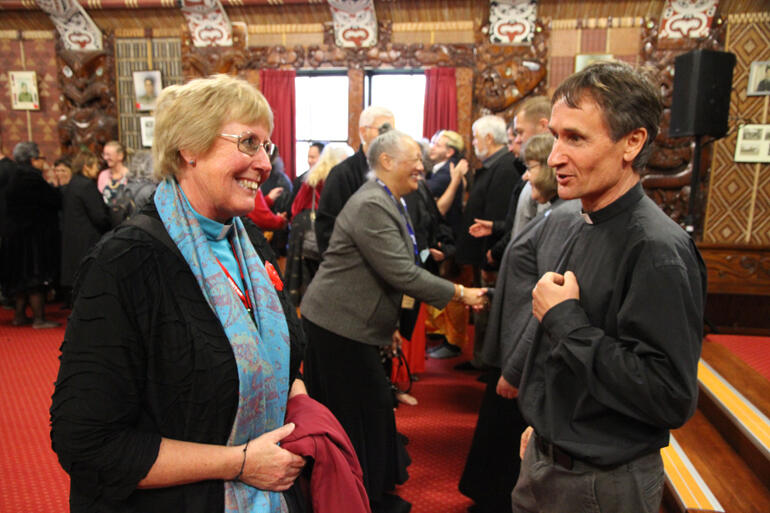
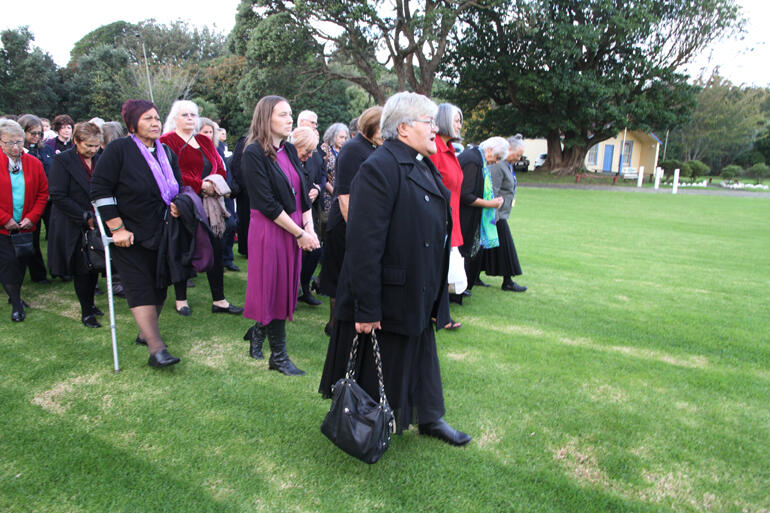
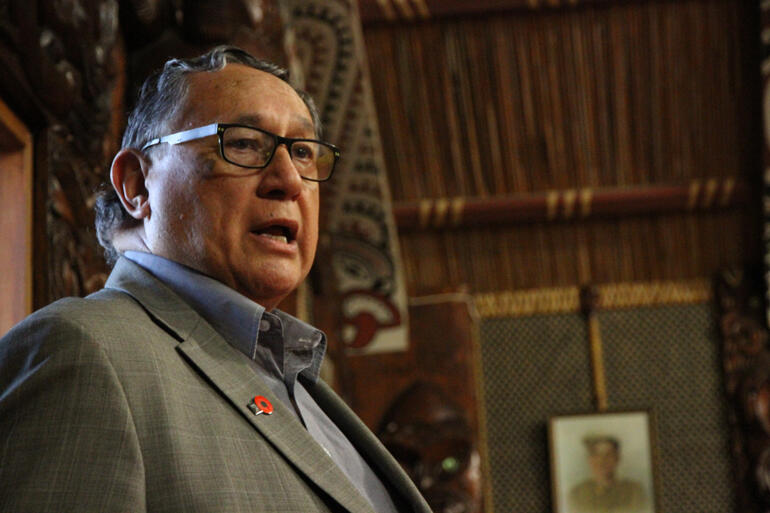
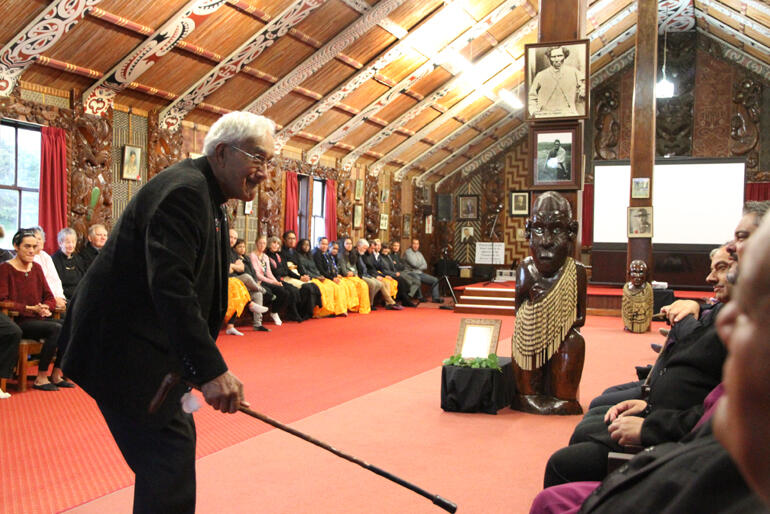
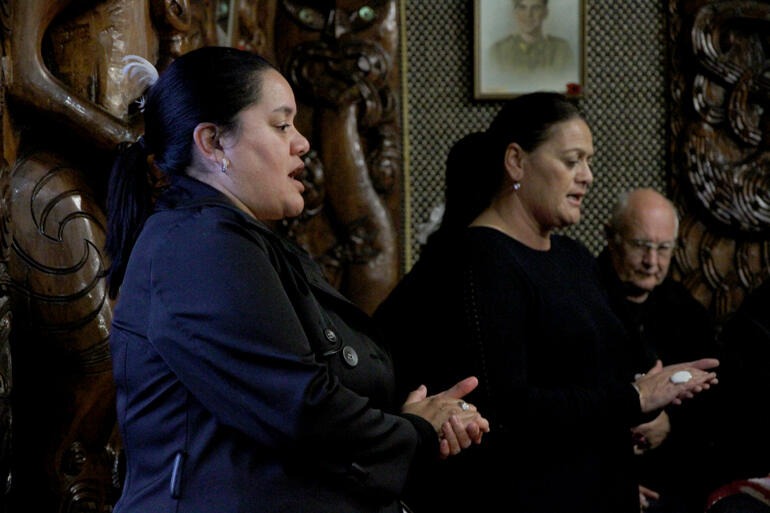
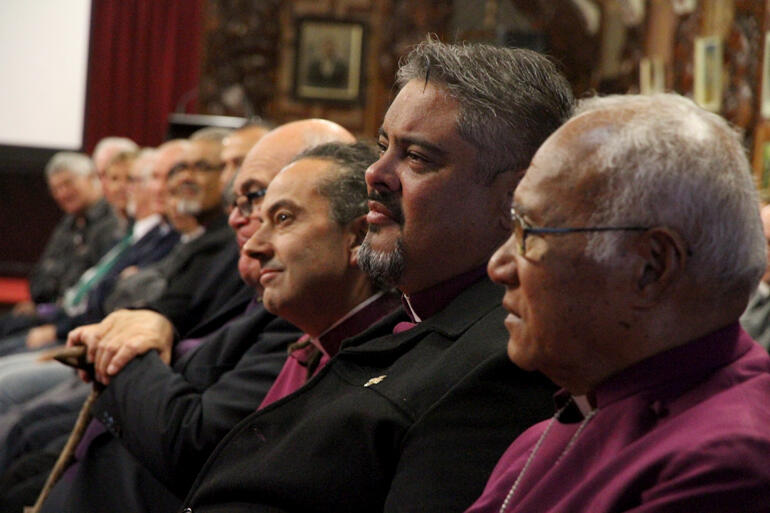
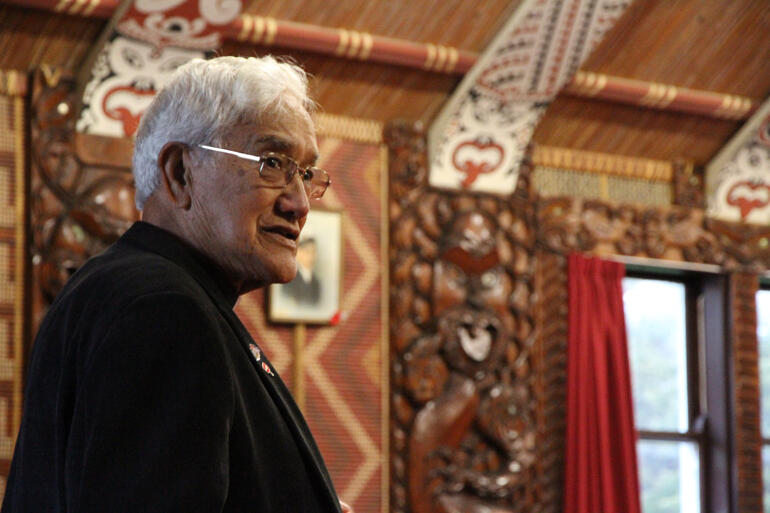
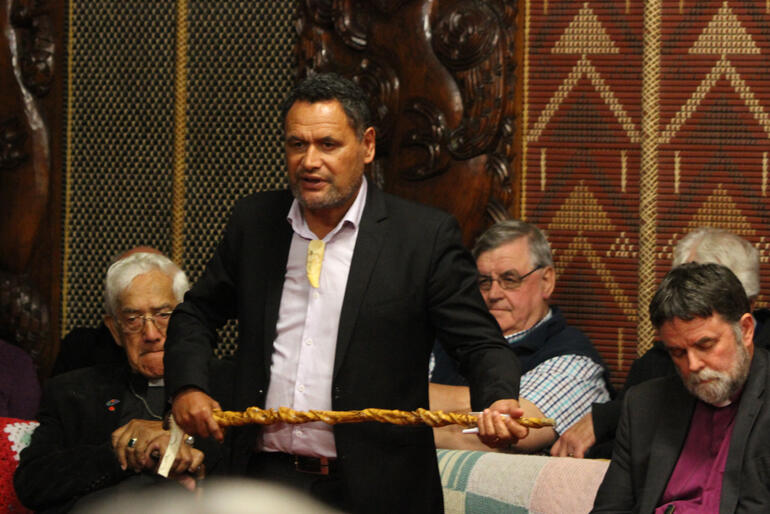
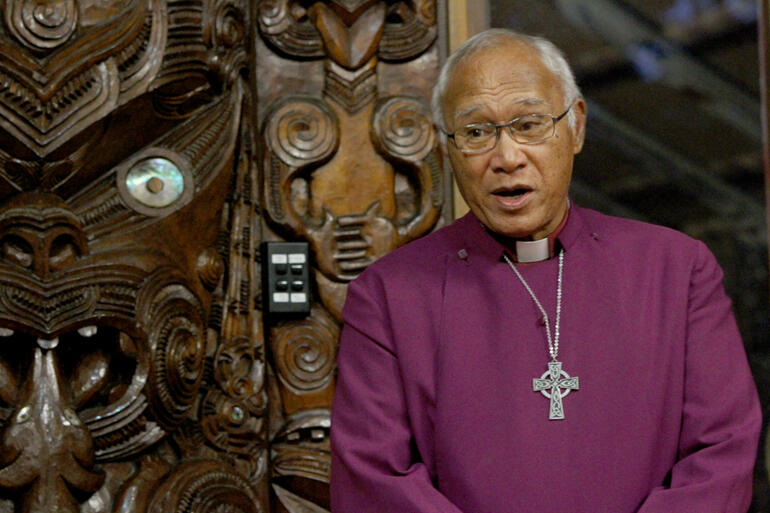
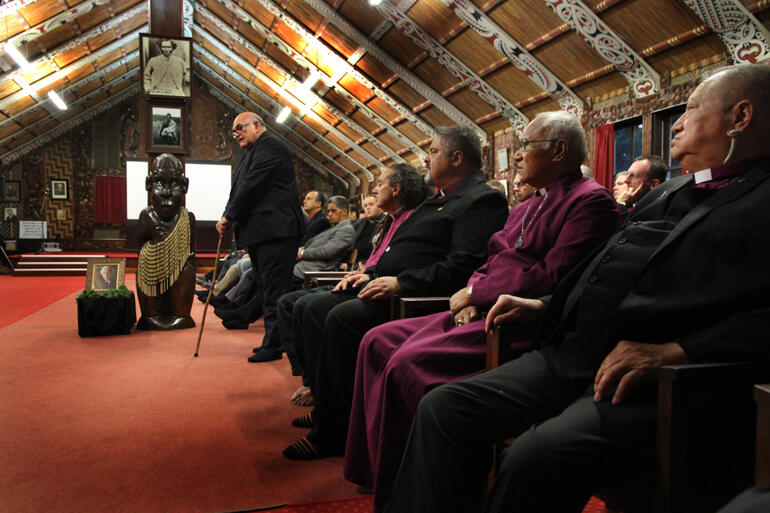
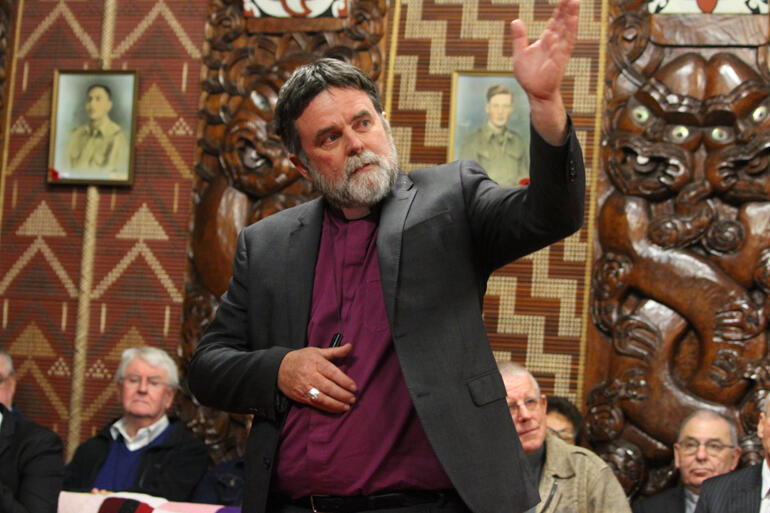
General Synod -Te Hinota Whanui 2018 officially opened last evening with a powhiri at Owae Marae.
About 160 synod delegates and supporters were welcomed onto the marae by Taranaki iwi and synod hosts Archbishop Philip Richardson and the Diocese of Waikato and Taranaki.
Owae Marae is in Waitara, near the site (at Te Kohia Pa) of the first shots fired in the New Zealand Land Wars, after colonial soldiers were sent to enforce the illicit sale of Maori lands, and is 15km northeast of the main synod venue in New Plymouth.
Te Atiawa chair Liana Poutu called in the synod visitors from Anglican dioceses and hui amorangi around Aotearoa, New Zealand and Polynesia, before they entered Te Ika-roa-a-Maui, the meeting house where both the welcoming ceremony and opening Eucharist of synod were held.
This General Synod faces decisions on how to respond to ongoing disagreement on the issue of blessing of same sex relationships. It is a conversation which has challenged the Anglican Church in these islands as we strive to live as one family, despite our differences in understanding where our faith compels us to stand on these issues.
For last evening’s powhiri and Eucharist, Taranaki’s St Mary’s Cathedral remained out of bounds as it awaits earthquake strengthening. For Archbishop Philip Richardson Owae was the best place for Taranaki to welcome the Church’s highest decision-making body, because of the powerful story Owae has to tell.
During the powhiri Archbishop Philip addressed Archdeacon Tiki Raumati, Pihopatanga kaumatua and third speaker for Taranaki, honouring the unrivalled way Tiki has stood astride the two worlds of Maori and Pakeha and pulled them together.
“You have taught us not to hide the history. If you hide the history, you fail to remember, to learn the lesson of that history,” Archbishop Philip said.
Before the speeches began, the Owae side greeted the synod one by one with hongi. Powhiri speaker Wharehoka Wano, of Te Atiawa, said that greeting each other first with touch was introduced by Te Whiti o te Rongomai and Tohu Kakahi 一 Taranaki’s famous 19th century prophetic leaders who founded the Parihaka peace village and led a non-violent resistance movement.
“They changed our protocol to begin our meetings with an embrace. We find it calms people, it settles them, and breaks the ice beforehand so that they can listen to what the speakers have to say.”
Archdeacon Tikituterangi Raumati reminded the synod of some tough truths about the injustices against Taranaki Maori and the church’s role in that.
“He reminded us that the work is not yet done, and the conversation is not yet finished,” reported Archbishop Don Tamihere after the powhiri.
“Taranaki is a place that taught us peace is always an option, even in the face of incredible violence and duress,” said Archbishop Don.
“But their generosity, their peacefulness, does not mean they have waived their right to justice.”
Other speakers, including Garry Nicholas (Te Atiawa) and Selwyn Parata (Tairawhiti) honoured the connection of Owae with the late Archbishop Sir Paul Reeves, Aotearoa New Zealand’s first Maori archbishop, whose photograph sat in place of honour at the ceremony.
Building up the relationship between the two groups, the speakers emphasised the ties that bind Sir Apirana Ngata and Sir Maui Pomare, two great figures in Maoridom, to Owae, the house itself and to the Anglican Church, especially through Te Aute College and the Pihopatanga.
Archbishop Winston Halapua added a note of gratitude from the Pacific.
“We read and talk about the love of God, but as you welcomed us all, Maori, Pakeha and Polynesia into this house, you have lived the love of God.” he said.
He honoured Sir Paul Reeves and the Taranaki people for their legacy of leadership and peace in Aotearoa and the Pacific.
Archbishop Philip spoke last for the Taranaki side, with words for the gathered synod members.
“It is a blessing for me to be here, to look into all of your faces and to see friends.”
“To see my family, with all its disagreements, and its diversity…and to know that each one of us is here for one reason and that is because our hearts have been claimed by Jesus.
“The greatest lesson I have learnt from Taranaki is that we cannot face away from each other. We have to face into the reality so that we can move in a way that creates a more just, a more honest future.
“But the good news is that the work we have to do is already achieved. It is achieved in the cross, it is achieved in the risen one, it is achieved in the way we face in to each other. That is the lesson of Taranaki.”




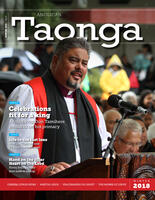
Comments
Log in or create a user account to comment.